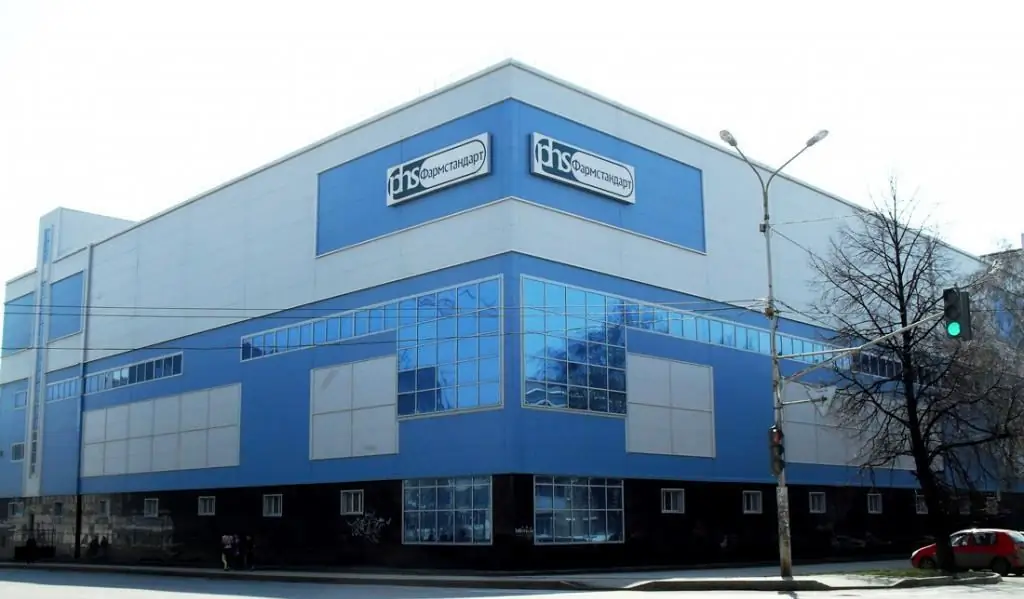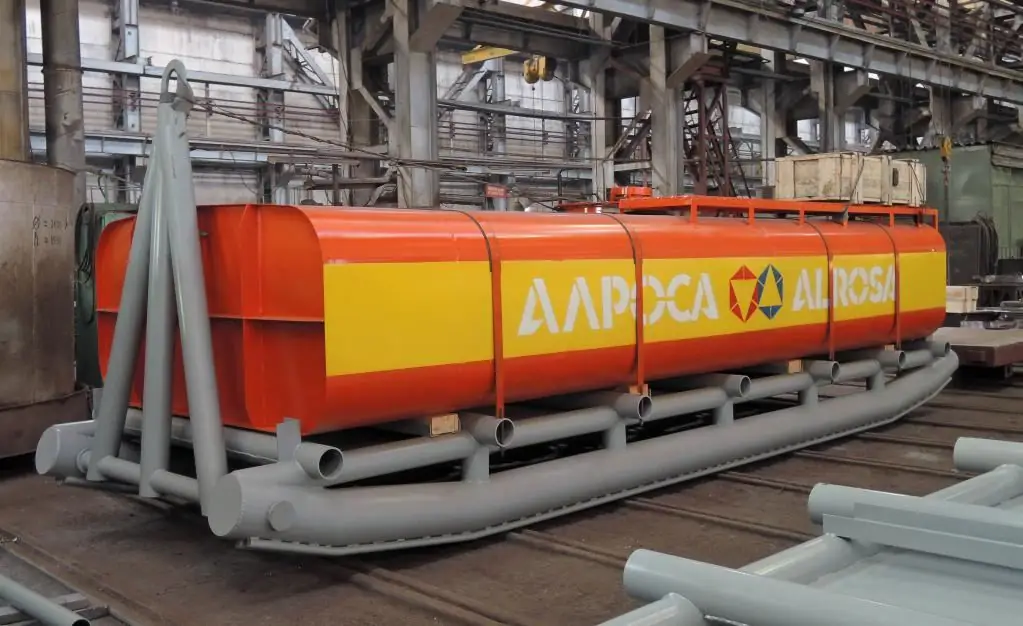2025 Author: Howard Calhoun | [email protected]. Last modified: 2025-01-24 13:10:39
Obukhov plant is one of the leading enterprises of the Russian military-industrial complex.

Along with the manufacture and design of products for civilian use, nuclear energy, shipbuilding and other industries, the plant manufactures, designs and maintains weapons systems and military equipment.
Factory formation
After the defeat in the Crimean War of 1853-1856, it became clear that the Russian army and navy needed to be re-equipped. For these purposes, they decided to build a plant. The construction was very fast, and a year after the start of construction, the first steel melting was carried out.

The plant got its name in honor of the famous scientist in the field of metallurgy Obukhov. By the way, there is another plant of the same name in Ukraine - Obukhov brick factory.
The construction of the Obukhov plant was completed in May 1863. After the opening, the plant began to produce artillery weapons. In the 80-90s of the 19th century, armor plates and weapons for ships began to be manufactured here.
According to the orders of the king, the plant got its own flag, which he received forcontribution to the development of the fleet.
Before the revolution
A modern production and laboratory base was created at the Obukhov plant, and then the famous scientist-metallurgist Chernov was invited to cooperate.
By 1886, the plant was considered the most advanced enterprise in Russia. A huge variety of products was made - from spare parts for ships to surgical instruments. From railroad wheels to mines and shells.
Not without workers' discontent. In May 1901, there was a major strike that ended in clashes with police and troops.

The plant actively participated in foreign exhibitions. By the beginning of the First World War, the enterprise became one of the largest steel mills, not only in the Russian Empire, but also in Europe.
In 1904, the Obukhov plant was connected to the Aleksandrovsky steel plant. The following year, a workshop for the production of optical instruments was established under him.
Before the revolution, almost all weapons for the fleet and half of the weapons for the ground forces were manufactured by the Obukhov plant.
St. Petersburg after its construction overtook the Urals in the production of steel products. Many specialists were invited to work from all over the country. About 4 thousand people worked at the plant. By 1914, the number of workers became more than 10 thousand.
After the revolution
After the Bolsheviks seized power in the country, the plant was renamed the Petrograd plant "Bolshevik". This name lasted untilcollapse of the Soviet Union. Only after the formation of the Russian Federation was it returned to its original name.
In February 1918 and until 1920, a specially created commission began to manage the plant, and the previous boss was dismissed.
But back in December 1917, production was stopped, and in January 1918 all workers were calculated. The plant was idle for three months before starting production again.
In the twenties, it produced not only weapons. It was here that the first domestic tractor and aircraft engine were manufactured.
The design bureau of the plant created several dozen artillery systems and the first production tank MS-1.
During the Great Patriotic War
During the war years, the Obukhov plant manufactured weapons, railway artillery installations, repaired military equipment.
In the very first months of the war, almost only women, old people and teenagers remained to work at the plant - all able-bodied men went to fight at the front. Work did not stop even at night.
When the Germans took Leningrad into the blockade ring, the Obukhov defense plant did not stop its activities even despite hunger, intense shelling and bombing.

Due to the lack of fuel and the almost complete blackout, the equipment arriving from the front had to be repaired manually.
In 1941-42 the factory workers worked and maintained the Road of Life, converted the fifth hydroelectric power station.
On the instructions of the headquarters of the Leningrad Front Obukhov plantmade not only weapons, but also other products, for example, construction and sapper tools.
For a great contribution to the victory, the company was awarded the Order of the Red Banner.
Post-war years
The destruction after the war and the blockade was huge. Over the course of several years, major repairs were underway to restore workshops and production.
Restoration began during the war, in 1943. And in seven years, the plant was completely restored to its pre-war state.
The design department began to actively develop new types of weapons.
In the 60-70s, the plant produced launchers for anti-ship and anti-aircraft missiles. In addition to military equipment, equipment for nuclear power plants was also released here.
In the 80s, the plant continued to produce its products and almost did not design anything new.
After the collapse of the Soviet Union and today
Since 2002, OJSC GOZ Obukhov Plant became part of the Almaz Air Defense Concern and was included in the list of enterprises of strategic importance. Today, more than 70 percent of air defense equipment is manufactured here, about a quarter of equipment for the navy.

Now the Obukhov plant is actively replacing construction equipment with more modern ones, new technological processes are being introduced, new workshops are being built.
After updating the material and technical base and building new workshops, it is planned to manufacture GLONASS systems, create productsfor the military, space industry.
Recommended:
Real estate development and its role in economic development. The concept, types, principles and foundations of development

In the framework of this article, we will consider the organization of the real estate development system and its role in economic development. The basic concepts, types and principles of organization of the development system are considered. The characteristic features of the system in Russian conditions are considered
History of porcelain: a brief history of development, types and description, technology

Ceramic products are the oldest kind of craft from all the skills mastered by man. Even primitive people made primitive utensils for personal use, hunting decoys and even earthenware utensils like hut ovens for cooking. The article tells about the history of porcelain, its types and method of obtaining, as well as the distribution of this material and its path in the artistic work of various peoples
HPP-1: history of the power plant, date of creation, capacity, address and stages of development

A museum exposition has been created on the territory of HPP-1, historical events caused its opening. Employees have collected exhibits, documentary collections from the archives with photographs and memoirs of old-timers. Models give an idea of the past of energy production and what it will be like in the future
Vitamin plant in Ufa: history and date of establishment, management, addresses, technical focus, stages of development, introduction of modern technologies and product quality

The life of a modern person takes place in a rather unfavorable ecological environment, accompanied by intellectual and emotional overload. You can't do without taking vitamins and minerals even in the summer. This material will focus on one of the oldest enterprises in Ufa, which is engaged in the production of useful products
Irkutsk heavy engineering plant: history and date of establishment, address, management, technical focus, stages of development, introduction of modern technologies and quality

Irkutsk heavy engineering plant is a city-forming enterprise producing equipment for leading industries in Russia. The company's products are supplied to the domestic market, finds recognition and demand abroad

